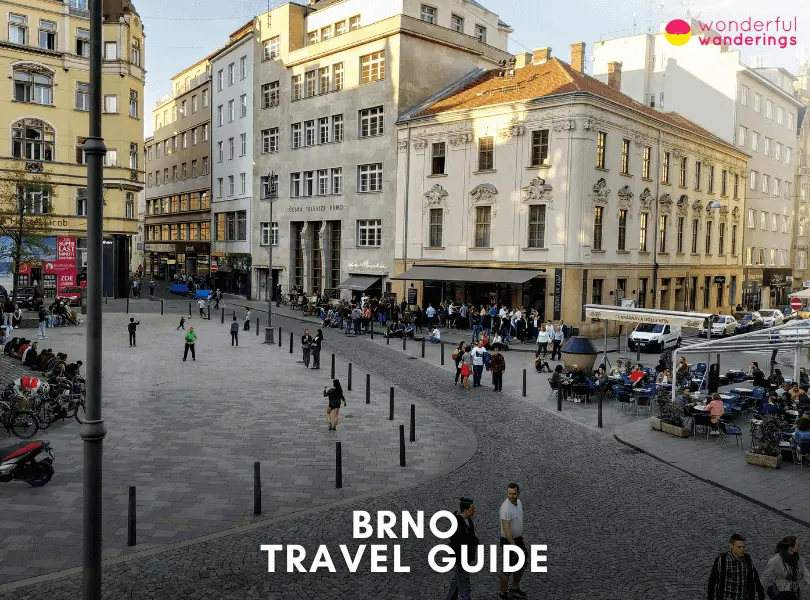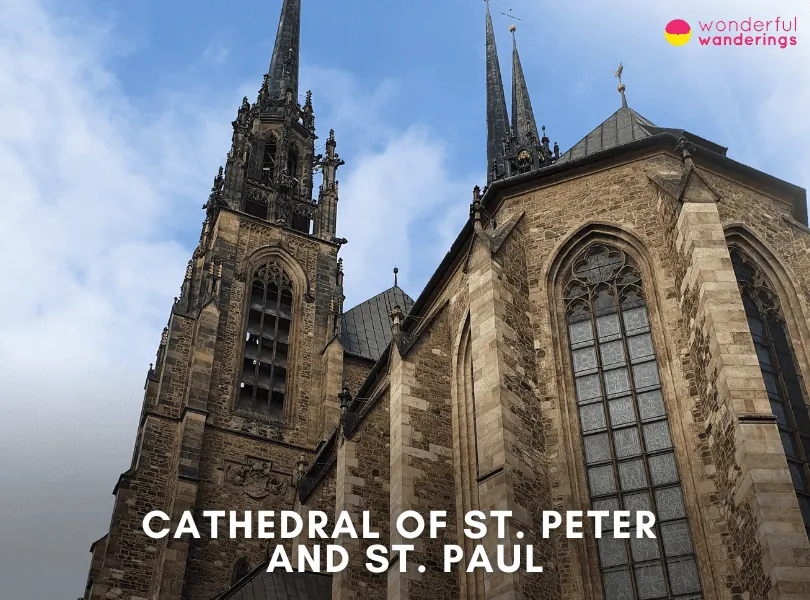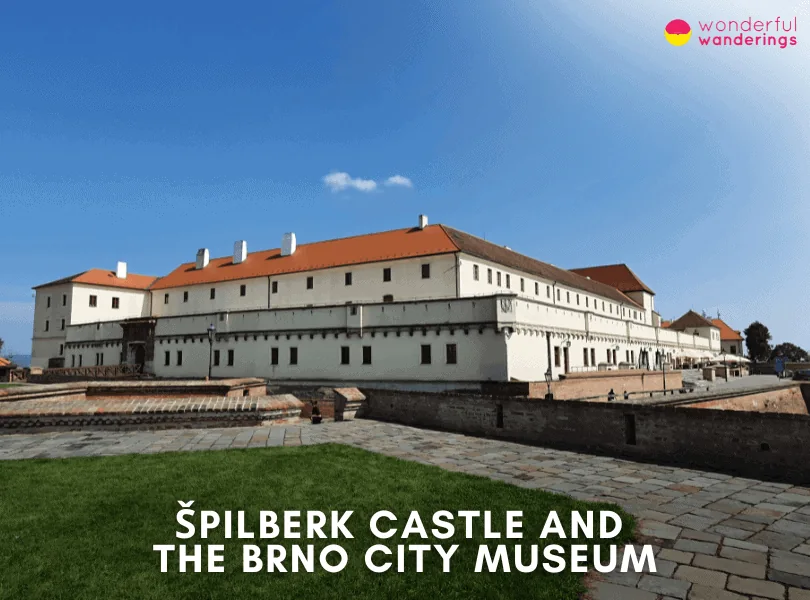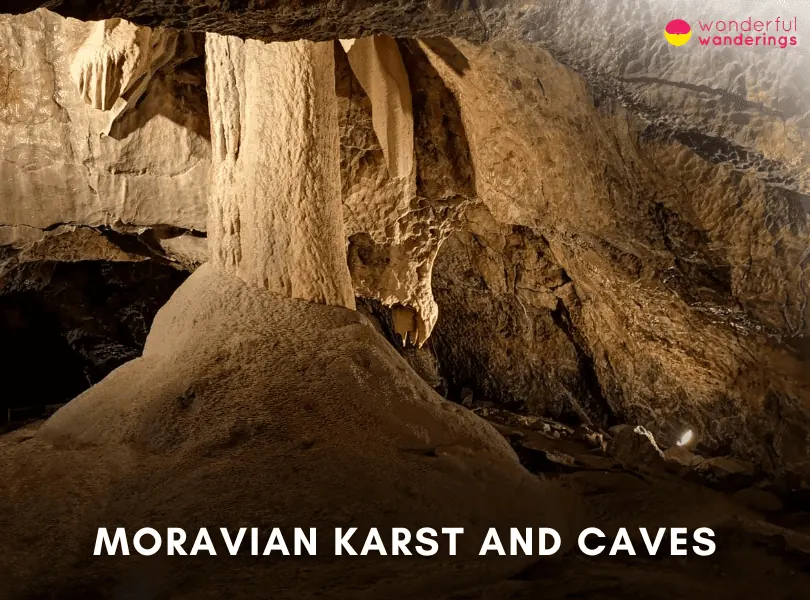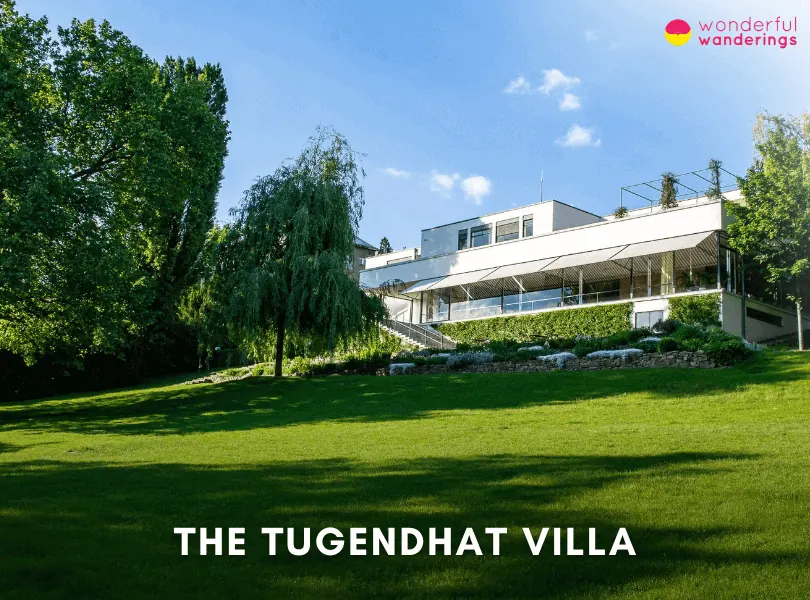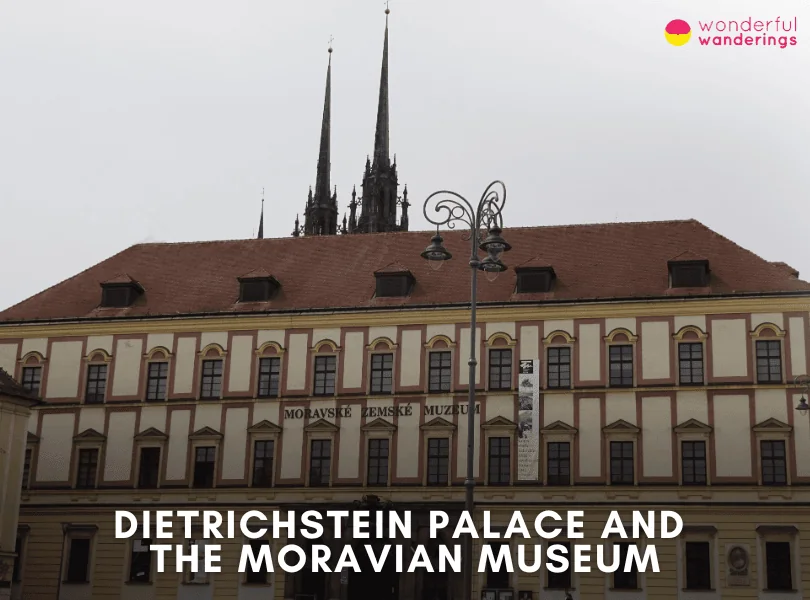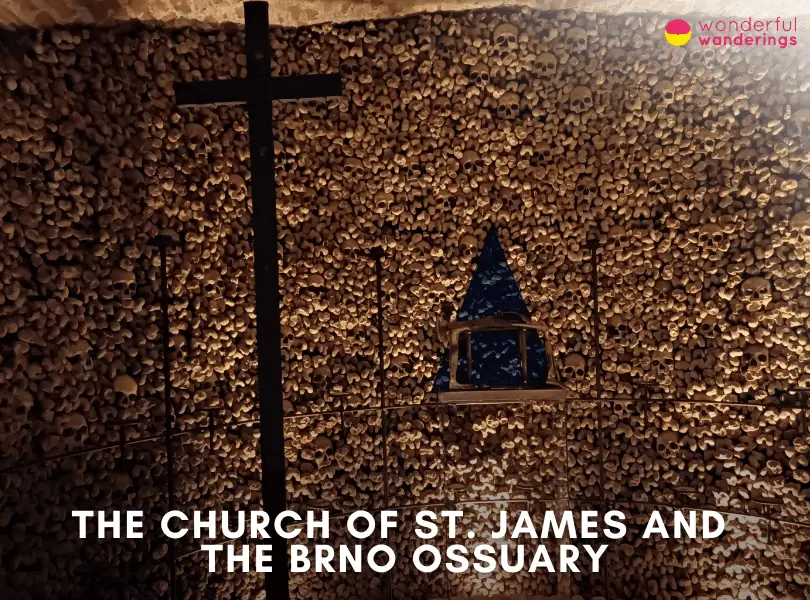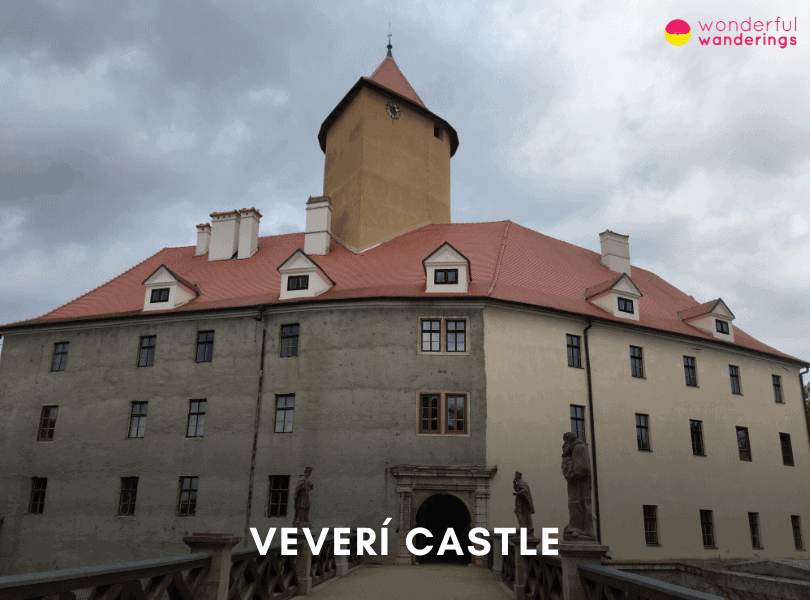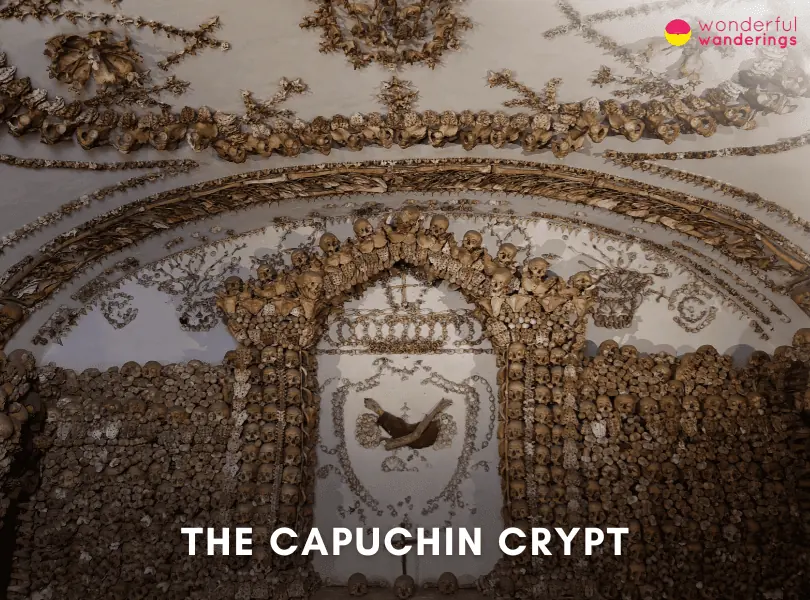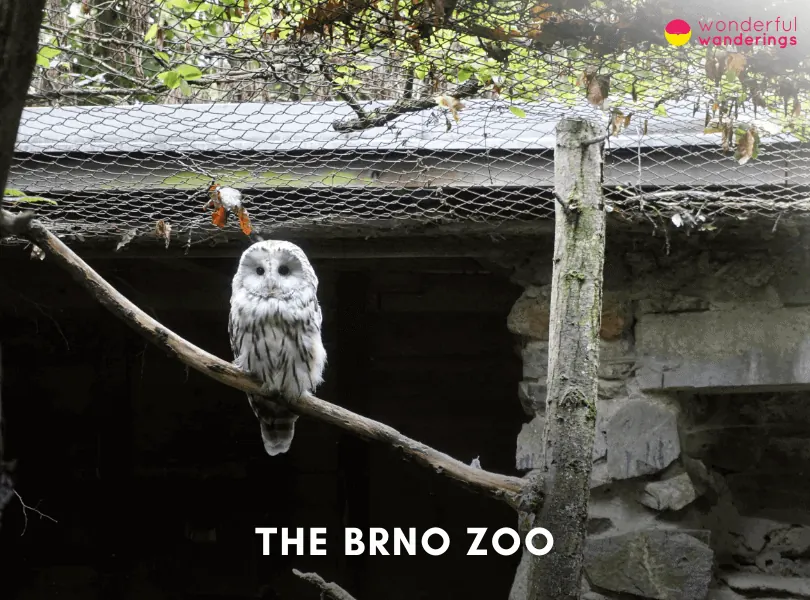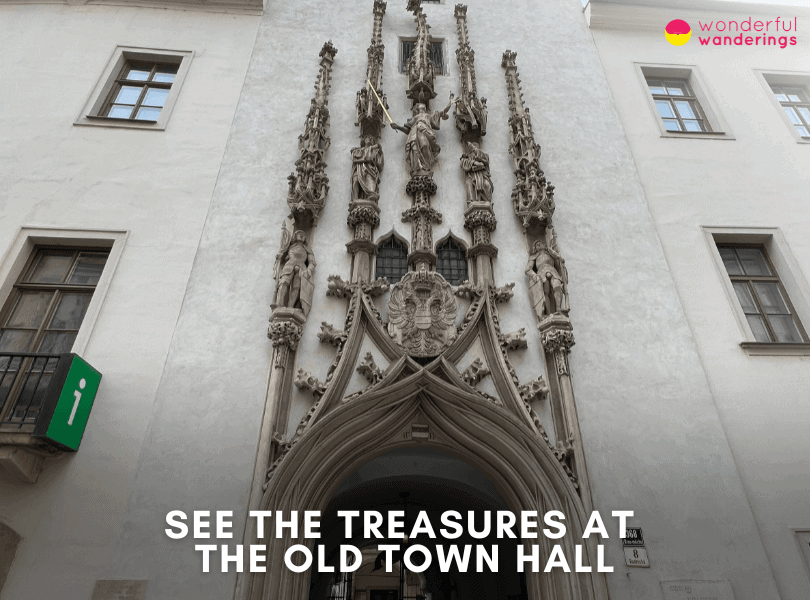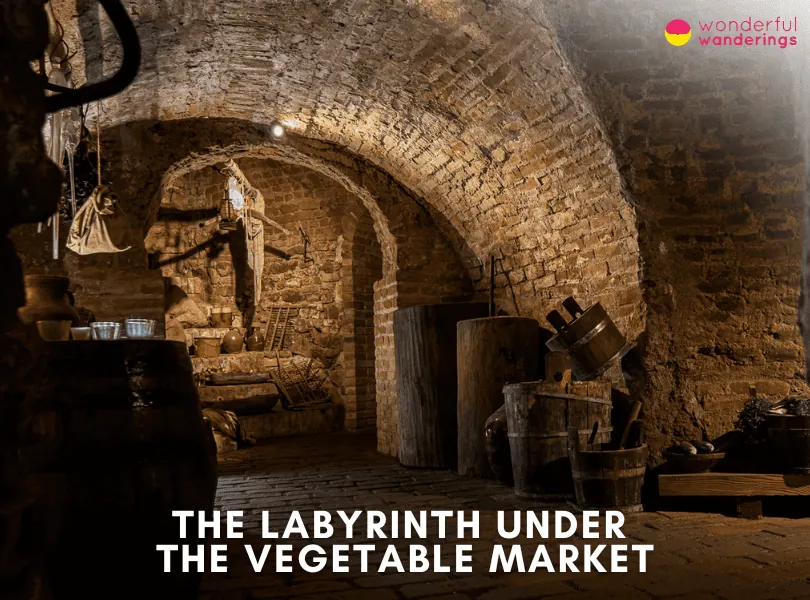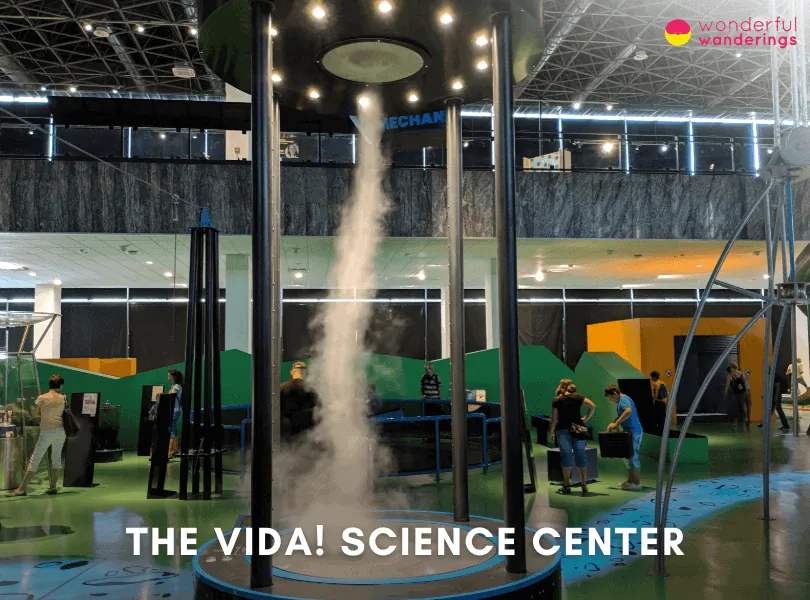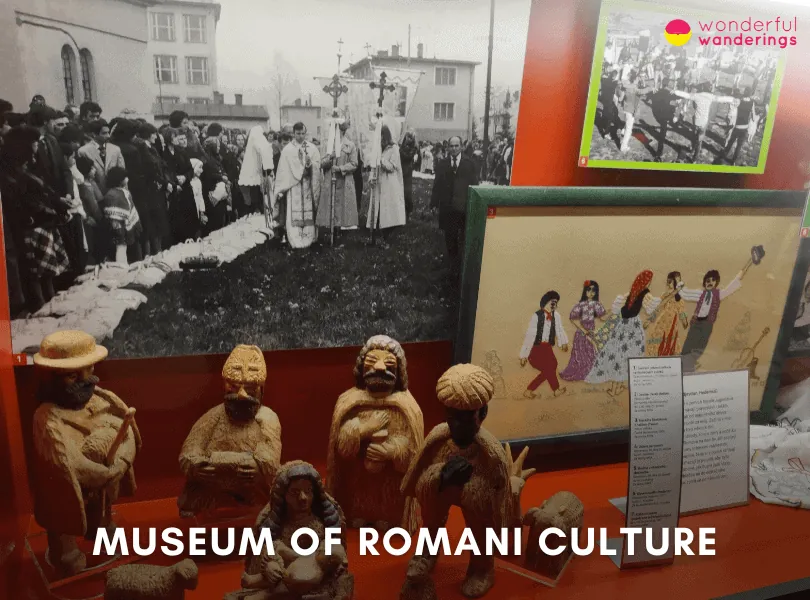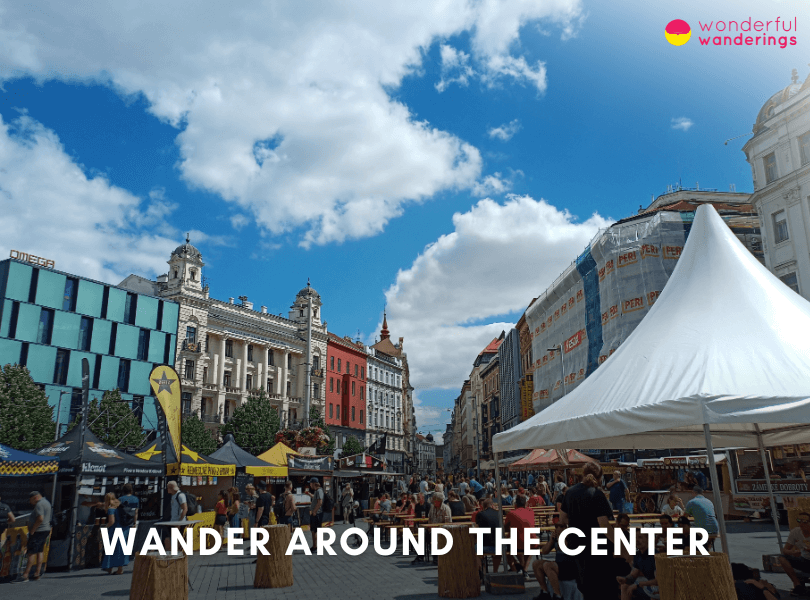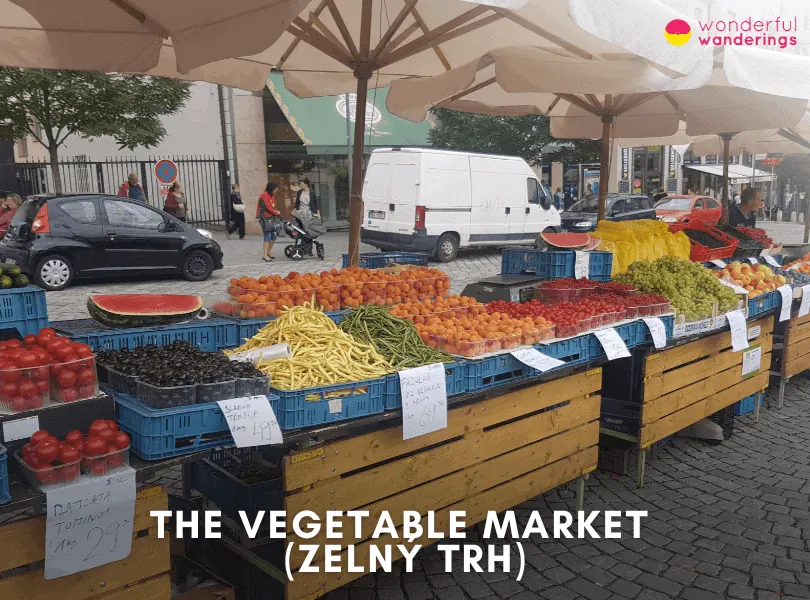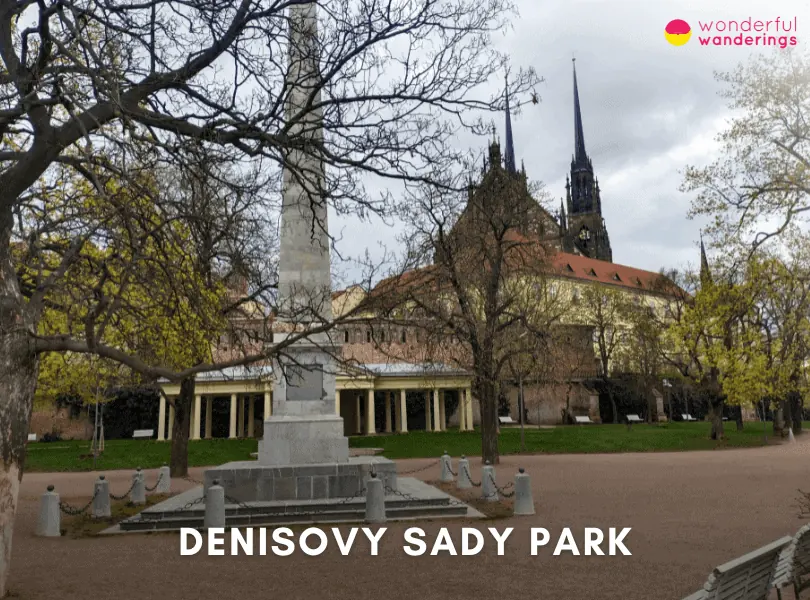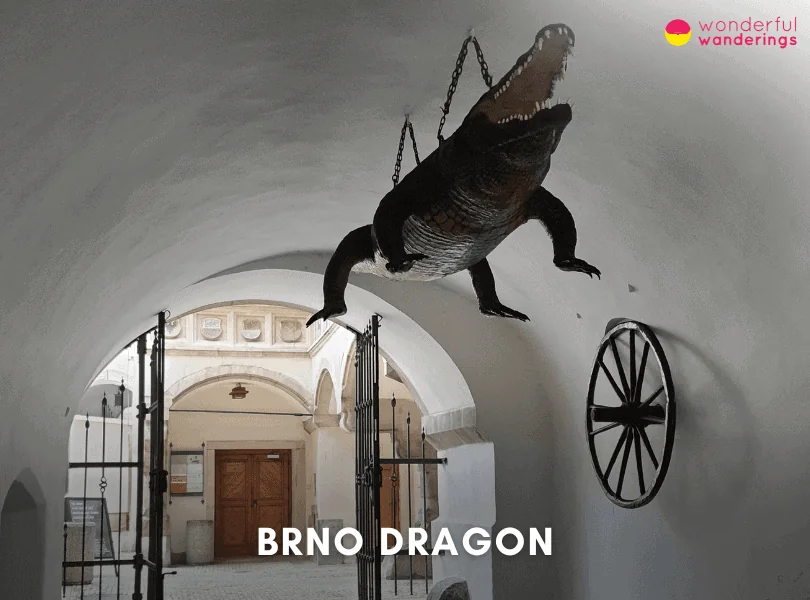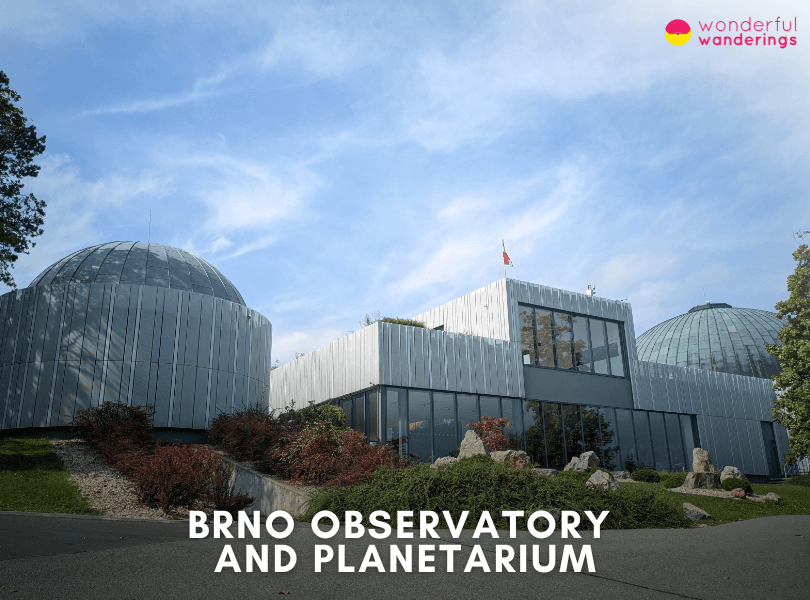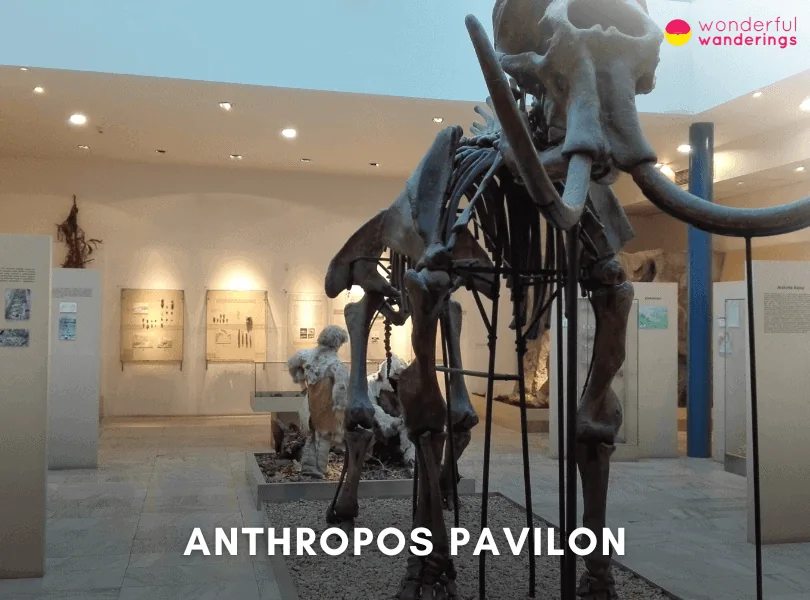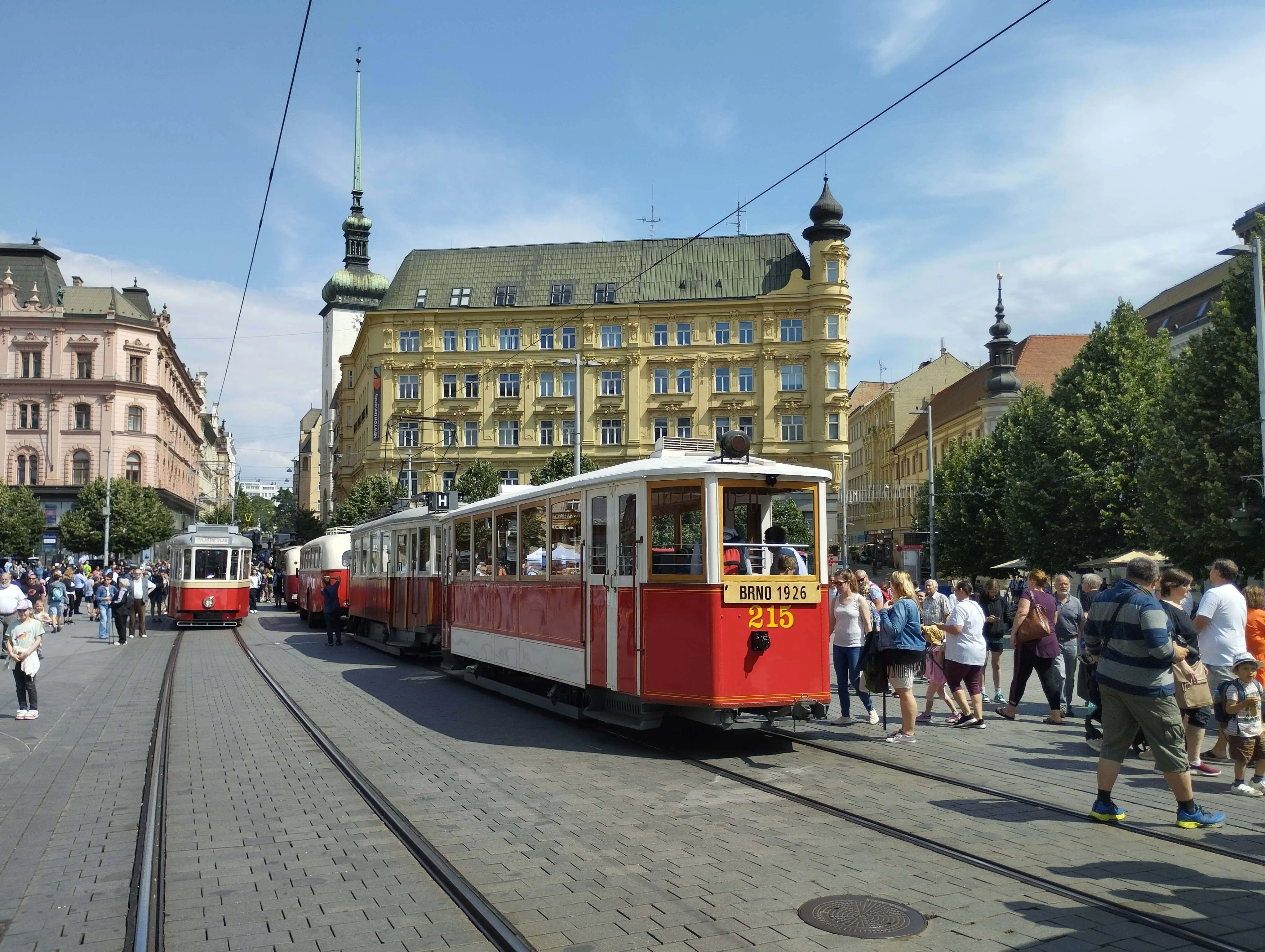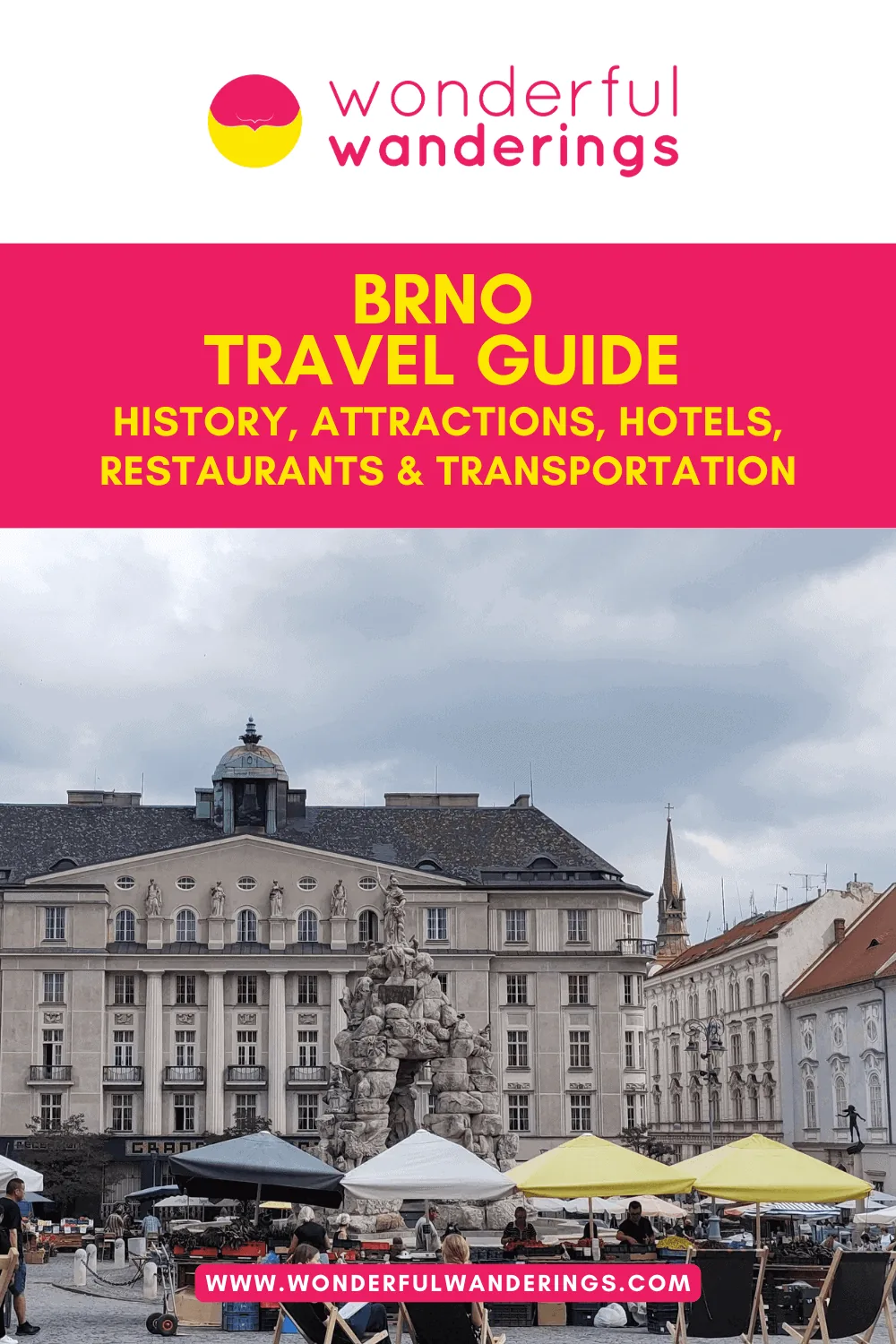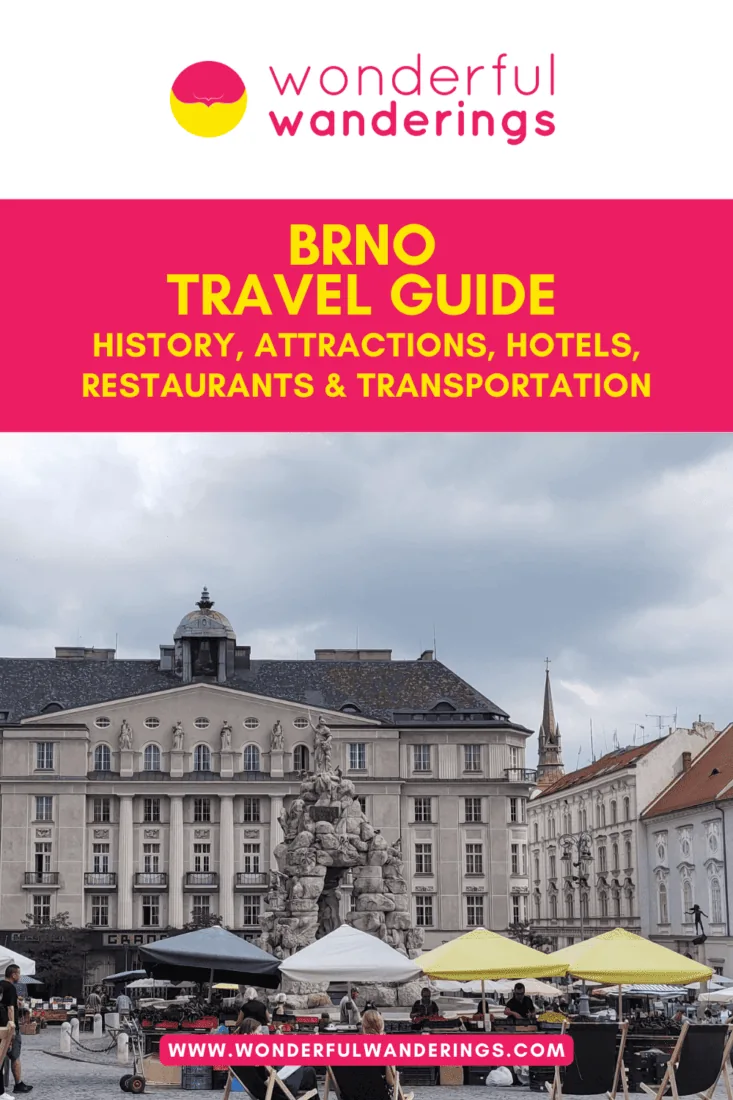Brno is the second-largest city in the Czech Republic. Nestled between the Moravian landscape, Brno’s history stretches back over a thousand years and its historic center is a testament to its storied past. Notable landmarks include the Špilberk Castle, a medieval fortress that turned into a prison and the awe-inspiring Cathedral of St. Peter and Paul, showcasing a splendid mix of Gothic and Baroque architectural styles. Brno has been pivotal in numerous historical events, including the Hussite Wars and the Thirty Years’ War and its heritage is preserved through its well-preserved streets and buildings. The primary language in Brno is Czech. But while Czech is the official language, English is widely understood in urban areas, particularly among the younger population. In terms of population, as of 2023, Brno is home to approximately 379,537 residents.
Brno enjoys a temperate climate with four distinct seasons. Summers are warm, with temperatures averaging around 25°C (77°F), making it an ideal time for outdoor activities and exploring the city’s parks and lakes. Winters are cold, with temperatures often dipping below freezing point, creating a snowy landscape. Spring and autumn offer milder weather and these seasons are perfect for leisurely walks through the city’s historic streets. Brno is often called the “Silicon Valley of Central Europe” due to its thriving tech and entrepreneurial industry. It is a significant educational center, home to famous institutions like Masaryk University and Brno University of Technology. Moreover, Brno is well-connected to other European cities, with its international airport providing easy access to the rest of the world.
Listed below are the things to do in Brno.
-
- Cathedral of St. Peter and Paul. The Cathedral of St. Peter and Paul, known locally as “Petrov”, sits on Petrov Hill in the heart of Brno, Czech Republic. This Gothic-style cathedral was built in the 14th century and is the seat of the Brno diocese. The cathedral is known for its decorated interior with altars, tombs and artworks. Visitors can admire the baroque pulpit and Gothic crypt and climb the tower for panoramic views of Brno. Visitors of all ages and interests can appreciate the history and art of this iconic church.
- Špilberk Castle and the Brno City Museum. Špilberk Castle sits atop a hill overlooking Brno. The castle houses permanent and temporary exhibits on Brno’s history inside the casemates, towers and former prison. Visitors can take a guided tour to walk through the atmospheric casemates and see artifacts like medieval torture devices.
- Moravian Karst and Caves. The Moravian Karst is a protected landscape known for its limestone rock formations and extensive cave system north of Brno near Blansko. Visitors can tour several spectacular show caves like Punkva Caves and Balcarka Cave, which feature impressive stalactites, underground rivers and lakes. This outdoor destination appeals to nature lovers, hikers and spelunkers of all ages looking to explore the unique geology and natural beauty above and below ground.
- Visit the Tugendhat Villa. The Tugendhat Villa in Brno is a masterpiece of modern architecture designed by Ludwig Mies van der Rohe in the 1920s. This UNESCO World Heritage Site pioneered new construction techniques and minimalist design. Visitors can join guided tours to see the villa’s iconic open-plan living space, onyx wall and other functionalist design details. The villa hosts contemporary art exhibits in parts of the house.
- Dietrichstein Palace and the Moravian Museum. The Dietrichstein Palace in Brno city center on Zelný trh. It houses the main exhibitions of the Moravian Museum (Moravské zemské Muzeum), the second largest and second oldest museum in the Czech Republic. The palace features exhibitions focused on natural sciences and the history and culture of the Moravia region, including paleontology, archaeology, mineralogy, ethnography and medieval history. Visitors can explore several floors of permanent and temporary thematic exhibitions.
- Explore the Church of St. James and the Brno Ossuary. The Church of St. James is in Brno Old Town on Jakubské náměstí. Underneath it lies the Brno Ossuary, the second largest ossuary in Europe after the Catacombs of Paris. The ossuary contains an estimated 50,000 skeletons and bones from graves that were dug up and moved there over the centuries to make room for new burials, especially during epidemics. The creepy ossuary appeals most to adults and teens interested in macabre history.
- Visit Veverí Castle. Veverí Castle is 12 kilometers (7.4 miles) northwest of Brno city center in the village of Veverská Bítýška, set dramatically on a hilltop overlooking the Svratka River. The castle dates back to the 13th century. Visitors can wander freely through the courtyards and climb the towers for views over the landscape or take a guided tour to see the interiors, which have exhibits on the castle’s architecture and history, period weapons and armor and the apartments where Prince Vasa lived in the 19th century.
1. Cathedral of St. Peter and St. Paul
The Cathedral of St. Peter and St. Paul is a Roman Catholic church located in Brno, Czech Republic. The present Gothic Revival style building dates back to renovations between 1879 and 1907, replacing earlier Baroque elements. The church includes two 81-meter high towers, decorative bishop tombstones on the exterior walls and a Neo-Gothic facade. The cathedral highlights are the ornate Crucifixion altarpiece and the underground crypt containing an ossuary with remains from an old cemetery.
The cathedral is renowned for its Gothic Revival architecture and intricate decorative features like the Neo-Gothic facade, altars and bishop tombstones on the exterior walls. Recent renovations uncovered the original Romanesque crypt and foundations under the present Visitors can tour the ornate cathedral interior and view elements like the Neo-Gothic wooden altarpiece depicting the Crucifixion. Visitors can also visit the tower, see the permanent exhibition of vestments and liturgical items, attend Catholic mass services and take guided tours of the underground crypt and ossuary. The cathedral appeals to visitors interested in religious sites, Gothic architecture, Czech history and ornate church interiors. Guided tours of the towers and exhibitions could interest mature children and students. Entry to the main cathedral area for viewing, attending mass and concerts is free.
2. Špilberk Castle and the Brno City Museum
Špilberk Castle in Brno, Czechia, atop a hill overlooking the city. It served as a royal castle before being converted into a fortress in the 13th century. Špilberk was the heaviest prison in the Austro-Hungarian Empire, earning the nickname “Dungeon of Nations” for imprisoning political dissidents. Its infamous prisoners included Italian poet Silvio Pellico who wrote about his eight years imprisoned there. The castle briefly served as a prison during WWII. Špilberk Castle has been home to the Brno City Museum, which presents exhibitions on the history of the castle and city.
Visitors can tour the castle casemates and view reconstructed cells to learn about the prison’s history. The museum also displays artifacts related to Brno’s history and culture, with some exhibits housed in the former baroque pharmacy. Other highlights include the lookout tower with panoramic views of Brno and the castle’s large courtyard hosting concerts and events. Guided tours of the castle are available in Czech, English and German. Špilberk Castle is open daily from 9 am to 5 pm and closed Mondays from October to March.
3. Moravian Karst and Caves
The Moravian Karst and Caves have an extensive limestone cave system and protected landscape near Blansko north of Brno, Czechia. The area stretches between Blansko, Brno and Adamov, all in the South Moravian Region. The Moravian Karst and Caves are known for having over 1,100 cataloged caves, making it the largest and most important karst area in the Czech Republic. Its unique geology and ecosystems are protected as a UNESCO Geopark and Landscape Protected Area.
Visitors can hike the forested nature trails and lookout points that offer scenic views of the unique karst rock formations and valleys. The Punkva Caves and Balcarka Caves are popular attractions in Moravian Karst, featuring stalactites, stalagmites, underground rivers and lakes. These caves can be toured along designated paths. Other activities include rafting tours along the underground Punkva River. The Moravian Karst appeals to spelunkers, nature lovers, hikers and outdoor enthusiasts of all ages who want to explore the forests, caves and karst landscape.
4. Visit the Tugendhat Villa
The Tugendhat Villa is at Černopolní 45, Brno, Czechia. This iconic modernist villa was designed by architect Ludwig Mies van der Rohe and built in 1929-1930. It pioneered new construction techniques like a steel framework and an onyx wall and embodied the minimalist functionalist design style. The villa is famous for its open-plan living space and clean, geometric lines. Key features include the curved macassar ebony walls, travertine floors and large windows that blur the line between indoor and outdoor space. The villa was commissioned by Fritz and Grete Tugendhat, a Jewish family who lived there until 1938, when they fled Czechoslovakia to escape Nazi persecution. Abandoned during WWII, the villa’s interior suffered damage and alterations over the years. Tugendhat Villa reopened to the public in 2012.
Visitors can join guided tours to appreciate the villa’s architectural details and design. Tours are available in Czech, English and German and must be booked in advance online. They provide a fascinating glimpse into a perfectly preserved example of modernist architecture and 1920s avant-garde lifestyle. The villa also hosts contemporary art exhibits in parts of the house. Architecture and design enthusiasts will value this chance to step inside an iconic modernist masterpiece.
5. Dietrichstein Palace and the Moravian Museum
The Dietrichstein Palace is in Brno’s city center on Zelný trh (Vegetable Market Square). It houses the main exhibitions of the Moravian Museum (Moravské zemské muzeum), the second largest and second oldest museum in the Czech Republic. The Baroque palace itself was originally built from 1613 to 1616 as the residence of Cardinal Franz von Dietrichstein. It was later rebuilt in a late Baroque style in the 18th century.
The Dietrichstein Palace’s permanent and temporary exhibitions focus on topics related to the Moravia region’s natural sciences, history and culture. Highlights for visitors include displays on paleontology, archaeology, mineralogy, the Great Moravia empire, medieval history and ethnography. One of the most famous artifacts is the Venus of Věstonice, a statue dating back over 20,000 years that was discovered locally. Visitors of all ages interested in science, history and culture can explore several floors of exhibitions at the palace. Special programs, lectures, concerts and workshops are also held regularly. Guided tours in English can be booked for groups.
6. Explore the Church of St. James and the Brno Ossuary
The Church of St. James is in Brno’s Old Town on Jakubské náměstí (St. James Square). Underneath the church lies the Brno Ossuary, the second largest ossuary in Europe after the famous Catacombs of Paris. This underground site contains the skeletal remains of an estimated 50,000 people, making it an extensive collection of bones.
The ossuary originated when the medieval cemetery next to St. James Church reached capacity. Graves were dug up about 10-12 years after burial to make room for newly deceased people. The unearthed bones were moved to underground chambers and galleries beneath the church, which became an overflow ossuary. It was expanded several times from the 17th century onwards to accommodate the Thirty Years’ War victims, plagues and cholera epidemics. It was sealed and forgotten for over 200 years until its rediscovery during renovations in 2001.
Visitors can take half-hour guided tours. Visitors will walk through atmospheric brick vaults with artistically arranged walls, stacks of skulls and bones and preserved historic wooden coffins. The creepy ossuary filled with the bones of so many Brno citizens and insights into fascinating hidden history will likely appeal most to adults and teens. It is best to book tickets in advance online or by phone for entry at a preferred timeslot.
7. Visit Veverí Castle
Veverí Castle is 12 kilometers (7.4 miles) northwest of Brno city center in the village of Veverská Bítýška, overlooking the Svratka River. The castle is one of the largest castle complexes in the country. The castle’s origins date back over 800 years to the 13th century when it was built as a fortified royal residence and hunting lodge.
Visitors can freely wander through the courtyards and climb the towers to take in panoramic views of the surrounding landscape. Tours allow visitors to view period exhibits showcasing the architecture and history of the castle, along with displays of antique weapons and armor. A tour brings visitors through the 19th-century apartments where Prince Vasa resided when he owned the castle. The castle frequently hosts public cultural events like summer music festivals, markets showcasing local food and crafts, historical reenactments and theatrical performances. The castle setting is appealing to visitors of all ages interested in Czech history, architecture, castle tours, scenic nature walks down to the river and special events. Veverí Castle is open from April to October, 10 am to 5 pm on weekends and certain weekdays.
8. The Moravian Gallery in Brno
The Moravian Gallery in Brno (Moravská galerie v Brně) is an art museum at Husova 18, Brno, Czech Republic and is the second-largest art museum in the country. It houses impressive collections of paintings, sculptures, graphic art, photography, applied arts and design from the Middle Ages to the present day.
The gallery is exceptional for the diversity of artistic disciplines it covers and its mission to present Czech visual culture in a European context. It occupies several architecturally significant buildings in central Brno, including the ornate Pražák Palace, which displays works by famous European artists such as Peter Paul Rubens. Visitors can view an array of temporary exhibitions focused on modern and contemporary art and participate in lectures, guided tours, workshops and cultural events. A highlight is the International Biennial of Graphic Design Brno, which has been held at the gallery since 1963. The Moravian Gallery offers an unparalleled insight into Czech art history with over 200,000 artworks spanning various eras and genres.
9. The Capuchin Crypt
The Capuchin Crypt is underneath the Capuchin Monastery on Kapucínské náměstí in the heart of Brno, Czech Republic. It was founded mid-17th century as a burial place for Capuchin friars. The crypt contains the naturally mummified remains of over 150 friars and other prominent citizens of Brno. The unique ventilation system in the crypt caused the bodies interred there to gradually dry out and mummify over time without embalming. The mummies include Capuchin friars buried between the 17th and 18th centuries as well as some of their wealthy benefactors. Many of the mummies are arranged in rows on the floor of the main chamber, with their heads resting on bricks and arms folded across their chests.
Visitors can view the mummified remains along with ornately decorated Baroque coffins and tombs. The crypt also contains artwork and inscriptions related to death and mortality. It offers a fascinating look at funerary practices and beliefs regarding death in centuries past. It remains a historical site and an active burial place still used by the Capuchin order. The Capuchin Crypt is best suited for adults and older children who have an interest in history, art and unique cultural sites. Visitors should be prepared to see real human remains.
10. Explore Nature at the Brno Zoo
The Brno Zoo (Zoologická zahrada města Brna) is at U Zoologické zahrady 46 in the Brno-Bystrc area, 6 kilometers (3.7 miles) from central Brno, Czech Republic. The zoo opened in 1953 and is now home to over 250 species of animals from around the world, spread across a hilly 41-hectare forested area with walking paths, attractions and facilities for visitors.
The Brno Zoo highlights include large enclosures mimicking natural habitats, such as the spacious African Savannah area with zebras, giraffes and antelopes roaming freely. The Tropical Kingdom in Brno Zoo has an indoor jungle environment for primates, reptiles and tropical birds, while the Beringia area showcases species from Siberia and the Arctic, like brown bears, Arctic foxes and reindeer. An interactive Children’s Zoo allows kids to pet domestic animals while parents relax at the zoo’s cafes and dining options. Brno Zoo places emphasis on conservation and education through its breeding programs, research and public awareness initiatives. Family-friendly activities include feeding sessions, pony rides, a miniature zoo train and adventure playgrounds. The zoo makes for an entertaining and memorable day for solo visitors, couples or families.
11. See the Treasures at the Old Town Hall
The Old Town Hall is in the heart of Brno’s historic city center at Radnická 8. This 13th-century Gothic building houses many treasures that provide a glimpse into Brno’s rich history, such as the underground labyrinth and the Mint Master’s Cellar. The must-see attraction is the underground labyrinth and cellar spaces preserved since medieval times.
One of the highlights is the mechanical clock on the facade, known as the Brno Astronomical Clock. This complex clock was installed in the 15th century and still works to this day. The Old Town Hall tower can be climbed for panoramic views over the historic center.
Visitors can see the Gothic council chambers with intricate vaulted ceilings, the Baroque council hall decorated with beautiful frescoes and the Gothic cellar with its stone pillars and vaults. The building also houses the Brno City Museum, displaying archaeological findings, period furniture and artwork. Visitors can tour these underground areas, see archaeological discoveries and learn about the old jail and torture chambers. The Old Town Hall is best for history enthusiasts interested in learning about Brno’s past through its architecture, artifacts and artwork. A visit here provides a glimpse into the city’s medieval beginnings.
12. The Labyrinth under the Vegetable Market
The Labyrinth under the Vegetable Market (Labyrint pod Zelným trhem) is underground beneath the Vegetable Market (Zelny trh) in the Old Town area of Brno. The entrance is at Zelny trh 21, 602 00 Brno. The labyrinth features a network of underground tunnels, cellars and passages dating back to medieval times and spanning over 1000 meters in length. Historically the spaces were used for storage to help keep food fresh. More recently, parts were used as wartime shelters and even a torture chamber.
Visitors can take tours to explore the underground maze of tunnels and learn about their history.
Visitors can see medieval cellars, an alchemist’s lab, wine cellars, replicas of a pillory and cage of fools and learn about lighting methods and storing food before refrigeration. The Labyrinth provides a glimpse into medieval Brno through its extensive underground tunnels and cellars. It is an intriguing attraction for history enthusiasts visiting the city. it appeals to visitors interested in the underground wonders and dark legends of the city’s past. The cellar tours offer an educational and exciting activity for history enthusiasts of all ages.
13. Join the Kids at the VIDA! Science Center
VIDA! Science Center is an interactive science museum at Brno Reservoir. The center aims to spark curiosity and interest in science for visitors of all ages through hands-on exhibits and demonstrations. VIDA! contains over 170 interactive exhibits spread throughout a modern building focused on various scientific areas like physics, chemistry, biology, astronomy and more.
Visitors can conduct experiments, explore phenomena like electricity and magnetism and learn by doing. The science center features exhibits focused on illusion, the human body, space exploration and mathematical puzzles. VIDA! hosts science shows, weekend programs for families, camps for kids during school breaks and more. Events like the Science Film Festival or Researchers Night bring science to life through special presentations and activities. VIDA! Science Center appeals to students on school trips, families with kids and anyone curious about science. The modern, high-tech museum brings science out of textbooks and into an engaging, exploratory environment. Visitors can discover science’s wonder through interactive exhibits and demonstrations.
14. Visit the Museum of Romani Culture
The Museum of Romani Culture in Brno’s Bratislavská district provides an in-depth look at the history and traditions of the Romani people. The museum contains exhibitions explaining the Romani migration from India to Europe centuries ago and the persecution they endured, including the Romani genocide during World War II. Displays showcase the rich cultural heritage of the Romani through traditional crafts, dwellings, clothing, jewelry, music and more.
Visitors can see a traditional Vardo wagon home and learn about the nomadic lifestyle, view colored traditional dresses and silver jewelry, listen to recordings of Romani music and appreciate Romani visual art and poetry. Guided tours provide additional context and the museum’s research library contains resources for further study. Special events like lectures, concerts and children’s programs share Romani culture with the local community. The museum aims to foster understanding and celebrate this ethnic minority group through immersive exhibits spanning history, language, traditions and daily life. The Museum of Romani Culture appeals most to adults, high school students, researchers and anyone interested in learning about the culture and traditions of the Romani people.
15. Wander around the Center
The city center of Brno features beautiful architecture that visitors can wander around. The pedestrian area spans from the main train station down Masarykova Street to the Náměstí Svobody (Liberty Square). Most buildings date back to the late 19th or early 20th century and are in various styles, from baroque to art nouveau. Walking down Masarykova Street features an abundance of shops, cafes, restaurants and bars lining the old town’s cobbled lanes and squares.
Brno features numerous churches, museums, theatres and other landmarks, like the Astronomical Clock, scattered throughout the center for visitors to explore. Some top sites include the Cathedral of St. Peter and Paul, with impressive Gothic architecture and city views from the tower, Špilberk Castle, set on a hill above town and architectural gems like the Villa Tugendhat showcasing modernism. The Vegetable Market Square is another central place with bustling fruit and vegetable stalls. Visitors of all ages and interests could spend hours wandering around Brno’s city center. The mix of historic buildings, modern shops and eateries and atmosphere makes it a great area to immerse oneself in and uncover what the Moravian Region has to offer.
16. Visit the Vegetable Market (Zelný trh)
The Vegetable Market (Zelný trh) in Brno’s old town center at Zelný trh 21, 602 00 Brno, is a traditional open-air marketplace selling fresh produce. The market has operated in the same spot for over 800 years, making it the oldest continually-running market in Central Europe. Visitors entering the square are greeted by sights and smells as local farmers and merchants produce fresh, artisan food products, herbs and flowers. Visitors can shop for items to take home, observe the bustling atmosphere, enjoy a meal or drink at one of the small restaurants around the square and view landmarks like the Baroque Parnas Fountain.
Exploring the historic market offers an authentic glimpse into Czech culture. Tourists interested in regional food, supporting small businesses and witnessing local commerce form bonds should not miss browsing the atmospheric Zelný trh. The market is best for adults interested in culture, food and supporting local businesses. Entrance to the Vegetable Market is free.
17. Relax at Denisovy Sady Park
The park “Denisovy Sady” was established in 1804 in Brno and has been merited to the Moravian Governor Count Mitrovský. An obelisk was erected in the park in 1818 to commemorate the end of the war. It is a quadrangular pyramid with four gilded lions in each corner. The park, then known as Františkov, was officially opened on 4th October 1818. The Františkov park was renamed “Denisovy Sady” after the French historian Ernst Denis in 1919.
Denisovy Sady is a peaceful green retreat between Brno’s Old Town and Petrov Hill, offering visitors scenic views of the surrounding city. Visitors can take relaxing strolls along its paths, picnic on the grass or simply sit on a bench and take in views of Brno. The park tends to attract couples looking for a romantic spot and individuals seeking some quiet respite from the city streets. Denisovy Sady Park is ideal for anyone visiting Brno to relax and enjoy the fresh air. Admission to Denisovy Sady Park is free and open year-round, making it a perfect spot for a relaxing break any day.
18. Brno Dragon
The Brno Dragon is inside the Old Town Hall building in Brno, Czechia, specifically in the passageway leading up to the tower. The “dragon” is actually a giant taxidermied crocodile hanging from the ceiling, believed to be an exotic gift presented to the city in the 17th century. It represents a dragon that once threatened Brno, ravaging livestock and citizens until it was outsmarted and killed. The preserved “dragon” symbolizes the legend and is a source of local pride.
Visitors to Old Town Hall can view the Brno Dragon up close as they pass through the hallway to climb the tower. The preserved “dragon” body hanging in the hall is supposed to be this slain dragon, gifted by a visiting foreign dignitary centuries ago. Visitors can view the crocodile specimen up close and learn more about the local legend. The site appeals most to those interested in history, folklore and unique attractions off the beaten tourist path. The Brno Dragon offers a unique photo-op as well as the chance to learn about an integral piece of the city’s folklore. Viewing the crocodile is free as it hangs in the public passage.
19. Brno Observatory and Planetarium
The Brno Observatory and Planetarium is a popular science center at Kraví hora 2 in Brno, Czechia. This modern facility features a digital planetarium with 3D video projections of the night sky across a large domed ceiling. Interactive exhibits on astronomy, space exploration and related sciences are spread throughout the building.
Visitors of all ages can enjoy using high-powered telescopes to observe celestial objects, attending lectures by astronomers and participating in special astronomy-themed events. The planetarium offers multiple shows per day where a presenter guides you through the wonders of the cosmos while stunning visuals are displayed on the dome. Various combo tickets and packages are available, making the Brno Observatory and Planetarium ideal for families, students and anyone with an interest in space and astronomy. Special rates apply to schools, groups and families. The observatory is open year-round, with longer hours on weekends. Guided night observations at the onsite observatory are offered on selected days.
20. Anthropos Pavilon
The Anthropos Pavilon is an archaeology and anthropology museum at Pisárecká 5 in the western part of Brno, along the Svratka River. This branch of the Moravian Museum contains over 15,000 square meters of exhibits spanning prehistoric times to the present day. The expansive permanent collection includes Stone Age artifacts, a full-size mammoth model, dinosaur skeletons, demonstrations of primitive technologies, dioramas of early human life and replicas of ancient cave art.
The Anthropos Pavilon hosts temporary exhibitions covering various archaeological discoveries and aspects of human evolution to showcase new research. Anthropos Pavilion offers an extensive look at the dawn of mankind through immersive displays and authentic artifacts. It provides a glimpse into the lives of the prehistoric ancestors. The museum appeals most to families, school groups, researchers and anyone interested in the origins of human civilization and culture. The Anthropos Pavilon is open Tuesday through Sunday. Guided tours of the exhibitions are available by appointment to provide more in-depth information on the prehistoric items on display.
21. Enjoy the main square – Náměstí Svobody
Náměstí Svobody, translated as “Liberty Square”, is the central square at the historic heart of Brno, Czech Republic. The square is a popular landmark that features beautiful architecture from the 1600s and a large event space. The square is surrounded by iconic buildings, including sculptures dating to 1689. The square highlights architectural treasures like the Old Town Hall, the Bishops Court and the Cathedral of Sts. Peter and Paul.
Visitors can admire the surrounding buildings’ Baroque, Renaissance and Gothic styles, stop to snap photos of the monuments and statues, do some shopping and dining or attend cultural events hosted on the square. The square is filled with lights and activity as vendors sell handicrafts and seasonal goods during the Christmas market season. Náměstí Svobody appeals to all travelers – families, couples, solo, history enthusiasts, foodies and those looking to experience local culture. Wandering the square and taking in the sights is free. Visitors only pay for any shopping, dining and attractions.
What are the best museums to visit in Brno?
Listed below are the best museums to visit in Brno.
- Moravian Museum. The Moravian Museum in the center of Brno exhibits the Moravian history, culture, art and natural history spread across two buildings, the Dietrichstein Palace and the Bishop’s Courtyard. The museum houses over 6 million artifacts, including coins, fossils and medieval weapons. Visitors can explore permanent exhibitions covering topics like Moravia’s early history, the region’s minerals and Moravian fauna. The museum hosts temporary exhibitions focused on various historical eras and themes.
- Technical Museum. The Technical Museum in Královo Pole, Brno, features a vast collection of historical vehicles, mechanical musical instruments, photography equipment and exhibits on energy, astronomy and printing. The exhibits span four floors and cover the history of technology and science. Visitors can see unique items like old steam engines, vintage automobiles, an electron microscope from the 1930s and a planetarium. Many interactive elements make this a great museum for kids.
- Mendel Museum. The Mendel Museum in St. Thomas Abbey in Brno highlights the life and work of Gregor Johann Mendel, who discovered the fundamental laws of inheritance through his pea plant experiments at the abbey. Exhibits trace Mendel’s biography and scientific contributions that established the foundations of genetics. Visitors can see Mendel’s tools, manuscripts, letters and other personal belongings. The museum grounds feature greenhouses and a garden similar to Mendel’s original experimental setup.
- Brno City Museum. Brno City Museum in Špilberk Castle contains exhibits on Brno’s history and culture, including weapons, documents, artwork and archaeological findings. Visitors can explore the castle’s casemates, bastions, prison cells and the ossuary. The museum frequently hosts temporary exhibitions focused on specific eras or topics related to the city. There are several galleries displaying artwork within the castle complex.
- Bishop’s Courtyard. Bishop’s Courtyard beside the Cathedral of St. Peter and Paul in the center of Brno contains the natural science exhibits of the Moravian Museum. Permanent exhibitions cover paleontology, mineralogy and the extinct fauna of Moravia. Visitors can see complete skeletons of mammoths, saber-toothed tigers and other prehistoric creatures. The courtyard houses the Dietrichstein tombs of Moravian nobles from the 16th and 17th centuries.
- Museum of Romani Culture. The Museum of Romani Culture in Brno’s Zábrdovice neighborhood highlights the origins, history, traditions and cultural heritage of the Roma people. Exhibits include artwork, crafts and everyday objects that provide insights into Romani culture. Visitors can learn about the Romani language, music and nomadic lifestyle, as well as the persecution faced by the Roma. The museum hosts cultural events, lectures and other activities.
What are the best things to do in Brno with kids?
Listed below are the best things to do in Brno with kids.
- Brno Zoo. The Brno Zoo in Bystrc, Brno, is a 65-hectare zoo home to over 400 animal species, including tigers, polar bears, monkeys and lemurs. Kids can view exotic animals from around the world. The zoo has pony rides, a children’s zoo with hands-on activities and a train ride around the park, making it a fun day for families.
- Moravian Karst Caves. The limestone caves of the Moravian Karst in Brno offer family-friendly guided tours. Kids will love exploring the underground corridors, seeing rock formations and riding a boat along the Punkva River. The Macocha observation decks in Moravian Karst Caves provide breathtaking views of the abyss.
- Veveří Castle. Veveří Castle in Brno dates back to the 13th century. Kids can walk along the ramparts, see ongoing restorations and explore the castle’s Medieval history. The castle grounds host festivals and reenactments for an immersive experience. The views from Veveří Castle offer panoramic views of the Brno Lake.
- Brno Observatory and Planetarium. Children can gaze through telescopes at Brno Observatory and Planetarium, see astronomy exhibits and watch 3D shows. The planetarium has programs for kids explaining the solar system and universe. The planetarium offers English audio guides for tourists.
- VIDA! Science Center. VIDA! Science Center in Brno allows kids to explore science through interactive exhibits. They can try physics experiments, build structures, study space and engage in fun learning. VIDA! has specific zones for younger children to play and discover.
- Petrov Cathedral Tower. Climbing the 84-meter tower of Petrov Cathedral provides panoramic views over Brno. Kids can burn off some energy climbing the 400 steps to the top. The climb and viewpoint are a great family activity.
What are the best activities for a business traveler in Brno?
Listed below are the best activities for a business traveler in Brno.
- Špilberk Castle. Špilberk Castle on Špilberk Hill in the center of Brno houses historical exhibitions of Brno City Museum’s casemates. Business travelers can take a self-guided audio tour of Špilberk Castle to explore the history of the castle, visit the Brno City Museum exhibitions to learn about the city’s history and walk along the castle ramparts and bastions. There is an admission fee to enter parts of the castle. The castle grounds and museums are open year-round.
- Villa Tugendhat. Villa Tugendhat at Černopolní 45, Brno-Pisárky, is a functionalist villa designed by Ludwig Mies van der Rohe in 1930 and is now a UNESCO World Heritage Site. Business travelers can tour the villa to see an example of modernist architecture and design. The tour allows visitors to see the living areas, servant quarters and the famous onyx wall. Reservations are required, with admission fees. Tours are available in English. Villa Tugendhat is best for adults interested in design and architecture.
- Moravian Karst. The Moravian Karst, north of Brno, is an area with over 400 caves open for tours, along with forests and limestone formations. Popular caves include the Punkva Caves and the Punkevní Caves. Business travelers can take a tour of one or more caves to see the unique cave formations and underground lakes and rivers. There are also above-ground hiking trails. The area appeals to adults and families interested in caves, hiking and nature. There are admission fees to enter most caves.
Where is Brno?
Brno is a Central European City located in the Czech Republic. It serves as the capital of the South Moravian Region and is the country’s second-largest city after Prague. Brno is in the southeastern part of the Czech Republic, approximately 200 kilometers (124 miles) southeast of Prague. The city is in the Moravian Karst region, surrounded by rolling hills and lush countryside.
Brno is known by a few alternative names, including “Brünn” in German and “Brünn” in Austrian German, owing to the city’s historical association with the Austro-Hungarian Empire. It is sometimes called the “Silicon Valley of Central Europe” due to its rapidly growing tech industry and innovative business environment. Brno is a vibrant cultural hub, hosting various festivals, museums and theatres. Additionally, it is home to several universities, making it a significant regional educational center.
What is the history of Brno?
The history of Brno is a fascinating story that spans over a millennium. The city’s roots can be traced back to the 11th century when it emerged as a trading post on the crossroads of important trade routes. Over the centuries, Brno grew significantly and became a key center of commerce and administration within the Czech lands. It played an important role in the region’s development, particularly during the reign of the Bohemian kings and later as part of the Habsburg Monarchy.
One of the city’s most iconic landmarks, Špilberk Castle, was constructed in the 13th century and served various purposes throughout its history, including as a royal fortress and a notorious prison. Brno also played a role in the Hussite Wars and the Thirty Years’ War, which left their mark on the city’s history. In the 19th century, Brno became an industrial hub, with an expanding textile and engineering industry, contributing to its economic prosperity. The city’s vibrant cultural scene flourished during this time, with theatres, museums and educational institutions. Following World War I, Brno became part of Czechoslovakia and continued to evolve as a thriving urban center, embracing modernity while preserving its historical heritage. Today, Brno is a vibrant and dynamic city known for its rich history, cultural diversity and innovative spirit.
What language is spoken in Brno?
The primary language spoken in Brno is Czech. Czech is the official language of the Czech Republic and it is the most widely used language for communication in Brno and throughout the country. Most of the population, including government institutions, educational facilities and businesses, use Czech as their primary language for daily interactions.
In addition to Czech, some residents in Brno may also speak other languages, especially English and German. English is commonly taught in schools and is widely understood, particularly in urban areas like Brno. Although not as prevalent as English, German can also be encountered due to historical ties with German-speaking regions and the influence of tourism and international business. Brno’s cosmopolitan nature has led to a diverse linguistic landscape, making it relatively easy for travelers and expatriates to navigate the city with English and, to a lesser extent, German.
What timezone is Brno on?
Brno is located in the Central European Time (CET) zone during standard time, which is UTC+1 (Coordinated Universal Time plus one hour). However, it’s important to note that, like many European regions, Brno observes daylight saving time (DST) during summer. During DST, the city switches to Central European Summer Time (CEST), which is UTC+2, effectively moving the clocks one hour forward.
The transition to DST typically occurs on the last Sunday in March, when clocks are set forward one hour and it ends on the last Sunday in October when clocks are set back one hour. This adjustment aligns with the European Union’s practice of maximizing daylight during the longer summer days. Visitors to Brno should know these time changes when planning their trips, as it can affect schedules and appointments.
How many people live in Brno?
As of 2023, Brno is home to an estimated 379,537 residents. The city’s population has experienced steady growth over the years, thanks partly to its economic opportunities, educational institutions and vibrant cultural scene, which continue to attract domestic and international residents.
What are the neighborhoods of Brno?
Listed below are the neighborhoods of Brno.
- Černá Pole. Černá Pole, meaning “Black Field”, is a peaceful residential area in the northern part of Brno. It is characterized by tree-lined streets, parks and a suburban atmosphere. The neighborhood is well-connected to the city center by tram lines, making it a desirable place for those seeking a quieter environment while still having easy access to urban amenities.
- Zábrdovice. Zábrdovice is located south of Brno’s historic center and is known for its diverse community and mixed-use character. It features a combination of residential buildings, shops and cultural venues. Public transportation links Zábrdovice to the city center and other parts of Brno, including trams and buses.
- Brno-město. Brno-město or Brno City District, encompasses the historic heart of the city. Here, visitors find iconic landmarks such as the Špilberk Castle, which has a rich history as a royal fortress and later as a prison. The Cathedral of St. Peter and Paul, a Gothic and Baroque architectural masterpiece, is also located in this district. Brno-město is highly walkable and offers a wealth of shops, restaurants and cultural attractions.
- Staré Brno. Staré Brno, meaning “Old Brno”, is an integral part of the historic city center. It retains its medieval charm with narrow cobblestone streets, colorful facades and historic buildings. The Vegetable Market (Zelný trh) is a crowded square where visitors can find fresh produce and artisanal goods in this district. Visitors can explore the rich history of Staré Brno while enjoying its vibrant atmosphere.
- Veveří. Veveří is a district located to the west of the city center, near the Brno Reservoir. This neighborhood is popular for its recreational opportunities, including water sports, cycling and hiking around the reservoir. It offers a mix of residential areas and outdoor leisure spaces, making it an attractive destination for nature lovers.
What are the most interesting facts of Brno and Czechia?
Listed below are the most interesting facts of Czechia and Brno.
- Brno Currency. The official currency of Brno, as well as the entire Czech Republic, is the Czech Crown (Czech Koruna or CZK). Travelers should exchange their currency for Czech Crowns upon arrival or use local ATMs for currency withdrawal.
- Timezone. Brno operates in the Central European Time (CET) zone during standard time, which is UTC+1 (Coordinated Universal Time plus one hour). During daylight saving time (DST) in the summer months, it switches to Central European Summer Time (CEST), which is UTC+2.
- Language Spoken. The primary language in Brno and throughout the Czech Republic is Czech. While English is widely understood in urban areas and among the younger population, especially in businesses and the tourism sector, it’s advisable to learn a few basic Czech phrases or carry a translation app when visiting less touristy places.
- Power Plugs. Brno, like the rest of the Czech Republic, uses the standard European two-pin Type C and Type E electrical outlets. These sockets have a voltage of 230V and a frequency of 50Hz. travelers from countries with different plug types may need a plug adapter to charge their devices or appliances. It’s a good idea to carry a universal adapter if planning to travel within Europe.
What is Brno famous for?
Brno is known for its captivating blend of historical significance, cultural vibrancy and modern innovation. Its historic charm is featured by architectural treasures such as the Špilberk Castle, which is an imposing fortress with a storied past and the Cathedral of St. Peter and Paul, a remarkable display of Gothic and Baroque architecture. The city’s historic center features streets filled with colorful facades, inviting squares and many historic landmarks, drawing admirers of history and culture worldwide.
Beyond its rich heritage, Brno is celebrated for its dynamic cultural scene, offering diverse cultural institutions, including the National Theatre and the Moravian Gallery. The city hosts many festivals and events, such as the International Fireworks Competition, which showcases its high-spirited culture. Moreover, Brno has embraced innovation and technology, earning the name “Silicon Valley of Central Europe” thanks to its thriving tech and entrepreneurial industries, with a strong educational foundation provided by popular institutions like Masaryk University and the Brno University of Technology.
What to do in Brno for a day?
For a memorable day in Brno, here are some must-do activities and places to explore.
- Morning Exploration of the Old Town. Begin the day with a leisurely stroll through Brno’s Old Town. Take in the old-fashioned streets, crowded squares and charming facades of historic buildings. The Vegetable Market (Zelný trh) offers a delightful starting point, complete with cozy cafes for a morning coffee.
- Tour Špilberk Castle. Proceed to Špilberk Castle, which is atop a hill overlooking the city. Discover the castle’s history through museum exhibits, which narrate its evolution from medieval fortresses to formidable prisons. Climb the castle’s tower for sweeping panoramic vistas of Brno, offering a unique perspective on the city’s layout.
- Lunch at a City-Center Eatery. Reenergize with a satisfying Czech lunch at one of the many local restaurants in the city’s heart. Enjoy traditional dishes like hearty goulash or svíčková, a marinated beef specialty, all while immersing in the city’s atmosphere.
- Explore Villa Tugendhat. Following lunch, venture to Villa Tugendhat, an exemplar of modernist architecture designed by Ludwig Mies van der Rohe. Engage in guided tours incorporating its pioneering design and UNESCO-listed historical significance.
- Afternoon at the Moravian Gallery. Immerse in art and culture with a visit to the Moravian Gallery. This cultural institution houses a vast collection of artworks spanning various periods and artistic styles, providing an enriching afternoon of exploration.
- Relaxation by the Brno Reservoir. Enjoy the late afternoon by the Brno Reservoir in Veveří, which is an oasis away from the urban area. Participate in various activities, including swimming, kayaking or lakeside strolls, all in between the natural beauty.
- Dinner at a Local Restaurant. Savour a delectable dinner at a neighborhood restaurant as the evening approaches. Delight in further Czech culinary delights or opt for international flavors. Complement the meal with a glass of Moravian wine or a Czech beer to round out the journey.
- Evening Entertainment at the National Theatre. Conclude the day with a cultural venue at the National Theatre in Brno. Study the performance schedule for opera, ballet or theatre productions and immerse oneself in the city’s artistic beauty.
How many days to spend in Brno?
The optimal duration for a visit to Brno ranges from 2 to 3 days. Firstly, spending two to three days immerses visitors in the city’s rich historical and cultural offerings. With this timeframe, travelers can explore iconic landmarks such as Špilberk Castle, Villa Tugendhat and the Cathedral of St. Peter and Paul at a relaxed pace, taking in their historical significance and architecture. Additionally, visitors can look into the city’s cultural scene, attend performances at the National Theatre and explore art collections at institutions like the Moravian Gallery.
Moreover, this duration provides enough time to enjoy Brno’s culinary delights and sample Czech cuisine in local restaurants and cafes. travelers can also take advantage of the opportunity to experience the city’s natural beauty by visiting the Brno Reservoir or taking leisurely walks through its parks and gardens. Furthermore, a two to three-day stay allows for a more comprehensive understanding of Brno’s modern facets, such as its expanding tech and innovative industry.
What to eat in Brno?
In Brno, visitors should indulge in traditional Czech cuisine to savor the region’s authentic flavors. A must-try dish is “svíčková”, which is marinated beef sirloin served with a creamy sauce, cranberry compote and a bread dumpling. This dish is a Czech culinary classic known for its rich and savoury taste, making it a popular choice among locals and tourists. Another staple is “goulash”, a hearty meat stew with paprika and spices, often served with bread or dumplings. Goulash provides a comforting and filling dining experience, especially during colder months. To satisfy sweet cravings, trying “trdelník” is a must. These chimney cakes are a popular Czech street food, featuring sweet, spiral-shaped pastries cooked over an open flame and often coated with cinnamon sugar or nuts. They offer a delightful blend of crispiness on the outside and softness on the inside, making them a beloved dessert or snack treat while exploring the city.
What are the top restaurants to eat and drink in Brno?
Brno has a healthy culinary scene with various top-notch restaurants and bars catering to diverse tastes. One must-visit establishment is “La Bouchée”, popular for its exquisite French cuisine, which offers a delicious selection of dishes prepared with attention to detail. With its warm and attentive service, La Bouchée creates a memorable dining experience, making it a favorite among locals and tourists.
For those seeking a taste of traditional Czech flavors, “U Šemíka” is a must-try, as this restaurant offers hearty Czech dishes in a rustic atmosphere. Guests can savor classics like goulash, schnitzels and dumplings, all with a wide array of Czech beers. U Šemíka provides an authentic taste of Czech cuisine in a welcoming setting, making it a cherished spot for those looking to explore the country’s culinary heritage.
If looking for a nightlife scene, “Bar, který neexistuje” (The Bar That Doesn’t Exist) is a hidden gem. Located behind an inconspicuous facade, this speakeasy-style bar surprises diners with its innovative cocktails and cozy impression. The skilled mixologists craft unique and delicious drinks tailored to individual preferences, ensuring an unforgettable night out in Brno.
Where to stay in Brno? (neighborhoods)
Listed below are where visitors can stay in Brno.
- City Center. Staying in the city center is a popular choice for tourists in Brno. It offers easy access to major attractions like the Old Town Square, Špilberk Castle and the Cathedral of St. Peter and Paul. The area is also known for its vibrant nightlife, with numerous bars and restaurants. travelers who want the convenience of being close to the city’s main sights and activities often go for accommodations in this neighborhood.
- Žabovřesky. This residential area is a quieter option for those seeking a more relaxed atmosphere. It’s slightly away from the busy city center but still well-connected by public transportation. Žabovřesky provides a peaceful environment with green spaces and parks, making it suitable for families or travelers looking for a peaceful stay.
- Královo Pole. Located north of Brno, Královo Pole is another peaceful neighborhood with excellent transport links. It’s known for its proximity to Brno’s largest park, Kraví Hora, which is perfect for outdoor activities and leisurely strolls. Accommodations in Královo Pole often offer good value for money and a quieter setting compared to the city center.
- Veveří. Situated near Brno’s reservoir, Veveří offers a unique blend of nature and city life. The area is known for its scenic lakeside views and recreational opportunities, making it an excellent choice for nature lovers and those who enjoy water sports. Hotels in this neighborhood often provide a more relaxed and natural setting.
- Židenice. Židenice is a diverse neighborhood located southeast of the city center. It offers a mix of residential and commercial areas, making it a convenient choice for travelers seeking a balance between urban amenities and a local neighborhood atmosphere. This area is well-connected by public transport and provides a taste of daily life in Brno.
What are the best hotels in Brno?
Listed below are the best Hotels in Brno.
- Grandhotel Brno. Grandhotel Brno is a historic hotel in the heart of the city that offers a luxurious stay with elegant rooms and excellent amenities. Guests appreciate its central location, making exploring Brno’s attractions on foot easy. Grandhotel Brno’s restaurant, Café-restaurant Parnas, is known for its fine dining experience. Grandhotel Brno is a top choice for those seeking sophistication and convenience.
- Barceló Brno Palace. Barceló Brno Palace is near the city center, this modern hotel combines contemporary design with comfort. Its stylish rooms and top-notch facilities cater to both business and leisure travelers. Barceló Brno Palace’s Bistro & Café Palace serves a range of culinary delights. Guests praise its attentive service and proximity to key landmarks like Špilberk Castle.
- Hotel International Brno. Hotel International Brno is known for its welcoming setting and spacious rooms. It is a favorite for those attending conferences and events in Brno. With a dedicated conference center, it’s a popular choice for business travelers. Additionally, its proximity to the Brno Exhibition Center is a major advantage for trade fair attendees.
- Hotel Continental. Offering a comfortable stay in the city center, Hotel Continental is known for its excellent value for money. Its well-appointed rooms, friendly staff and variety of dining options make it a convenient choice for tourists on a budget. Hotel Continental’s location allows easy access to the Old Town and cultural attractions.
- Courtyard by Marriott Brno. Hotel Continental, this modern hotel appeals to travelers who appreciate contemporary design and amenities. Its spacious rooms, fitness center and on-site restaurant, Olea, receive positive reviews. Hotel Continental’s location is advantageous for those with business interests, as it’s close to the city’s industrial and technology hubs.
What is the transportation like in Brno?
Transportation in Brno is well-organized and convenient, making it easy for residents and visitors to navigate the city. The primary mode of public transportation in Brno is the tram and bus network. It has an extensive tram system that covers most areas, while buses serve additional routes and suburban areas. This efficient public transportation network is known for its punctuality and cleanliness, making it a popular choice for daily commuting and exploring the city. The network is well-maintained and affordable, providing a cost-effective means of getting around Brno.
For those who plan to use public transportation frequently during their stay in Brno, the Brno Card is a valuable option. The Brno Card is a city pass that offers unlimited travel on trams and buses within the city, making it a cost-effective choice for tourists. It also provides access to various museums, galleries and attractions in Brno at discounted rates or even for free. This card simplifies transportation and sightseeing for visitors, ensuring they can explore the city’s cultural and historical offerings without hassle. It’s available for different durations, such as 24 hours, 48 hours or longer, to suit individual travel plans.
In addition to trams and buses, Brno also has a well-developed network of cycling lanes and pedestrian-friendly streets, encouraging eco-friendly modes of transportation. Many visitors opt to explore the city on foot or by renting bicycles and cars, especially during the pleasant weather in spring and summer.
How to get from Brno airport to the city?
Getting from Brno Airport to the city center is straightforward, with several transportation options. The airport, officially known as Brno-Tuřany Airport, is approximately 7 kilometers (about 4.3 miles) south of the city center. One of the most convenient and economical options is to take a bus. Bus line 76 connects the airport to Brno’s main train station, which is centrally located. The journey typically takes 20-25 minutes, depending on traffic conditions. Buses frequently run regularly, providing reliable transportation between the airport and the city center. Taxis are also readily available at the airport and the journey to the city center usually takes about 15-20 minutes, again depending on traffic. It’s advisable to use registered taxi services to ensure fair pricing and a safe ride. Taxi fares can vary, but there are usually fixed rates to popular destinations within the city. Moreover, travelers who prefer more flexibility or have a lot of luggage may choose a car rental service available at the airport. The journey by car typically takes around 15-20 minutes. Visitors can follow the clear road signs from the airport to the city center. Regardless of the mode of transportation chosen, travelers can easily access Brno’s attractions and amenities from Brno Airport.
How to get from Brno to Prague?
Traveling from Brno to Prague is a common journey for tourists and locals. The two cities are well-connected and there are multiple transportation options available. A bus is one of the most popular and cost-effective travel methods between Brno and Prague. Several bus companies operate daily routes between the two cities, offering frequent departures. The journey by bus takes approximately 2.5 to 3 hours, depending on traffic conditions and the specific route. Buses are comfortable and equipped with amenities like Wi-Fi, making it a convenient option for travelers on a budget.
Trains also provide a convenient and scenic way to travel between Brno and Prague. The journey by train typically takes around 2.5 to 3 hours and both direct and indirect train connections are available. Trains offer comfortable seating and onboard services, including dining cars. The main train station in Brno, known as Brno hlavní nádraží and Prague’s main train station, Praha hlavní nádraží, are well-connected hubs for this route.
For travelers who prefer flexibility and wish to explore the countryside along the way can consider renting a car. The distance between Brno and Prague by road is 200 kilometers (about 124 miles) and the journey typically takes around 2 to 2.5 hours, depending on traffic and the chosen route. travelers can follow the D1 motorway, which is a well-maintained and major highway that connects the two cities. It’s essential to check traffic conditions and road closures before starting the journey.
How to get from Brno to Vienna?
Traveling from Brno to Vienna has several convenient transportation options available. Taking the train is one of the most popular and efficient ways to travel between Brno and Vienna. There are direct train connections between Brno’s main train station (Brno hlavní nádraží) and Vienna’s main train station (Wien Hauptbahnhof). The journey by train typically takes around 2.5 to 3 hours, making it a convenient and comfortable option for travelers. Trains are equipped with amenities such as Wi-Fi and dining cars, ensuring a pleasant journey.
Travelers can also take buses that operate between Brno and Vienna. Several bus companies offer daily routes and the journey by bus takes approximately 2.5 to 3.5 hours, depending on traffic conditions and the specific route. Buses are a cost-effective option and provide comfortable seating, making them viable for those looking to save on transportation costs.
For travelers who prefer flexibility and wish to explore the Austrian countryside, renting a car is an option. The distance between Brno and Vienna by road is approximately 130 kilometers (about 81 miles) and the journey typically takes around 1.5 to 2 hours, depending on traffic and the chosen route. travelers can follow well-marked highways such as the D2 in the Czech Republic, which connects to the A5 in Austria, leading to Vienna.
The choice of transportation between Brno and Vienna depends on individual preferences, budget and schedule. Trains offer speed and convenience, while buses provide affordability and car rental offers flexibility and the opportunity to explore the scenic route. Regardless of the chosen mode of transportation, both Brno and Vienna offer a rich cultural and historical experience for travelers to enjoy.
Are there any airports in Brno?
Yes, Brno has an airport. It is officially known as Brno-Tuřany Airport. The airport is approximately 7 kilometers (about 4.3 miles) south of the city center. Brno-Tuřany Airport is a regional airport and primarily handles domestic and international flights, providing passenger and cargo services.
The airport’s location in the southern part of Brno makes it accessible to travelers heading to and from the city. It offers passengers a range of facilities and services, including car rental, taxi services and public transportation options, such as buses, connecting the airport to the city center and other nearby regions. Brno-Tuřany Airport connects the region to various European destinations, making it a convenient gateway for travelers to and from Brno and the surrounding areas.
Are Christmas markets crowded in Brno?
Yes, Christmas markets in Brno can be quite crowded during the holiday season. Brno’s Christmas markets are known for their charming and festive atmosphere. The combination of twinkling lights, holiday decorations and traditional music creates a warm and inviting mood that draws locals and tourists. Many people come to soak in the holiday spirit and enjoy the seasonal festivities. Also, visiting Christmas markets is a cherished cultural tradition in the Czech Republic. It’s a time when families and friends gather to celebrate the holiday season. This cultural significance results in a high turnout of people who want to participate in the traditions, indulge in holiday treats and shop for unique gifts and crafts. Plus, Brno’s Christmas markets offer a wide range of attractions, including stalls selling handmade crafts, delicious Czech and international food and mulled wine. There are often performances, concerts and activities for children, which appeal to a broad audience, contributing to their popularity and crowding. While the crowds at Brno’s Christmas markets can be substantial, many visitors find the lively and spirited atmosphere part of the charm. It’s advisable to visit during non-peak hours if preferring a quieter experience or to embrace the festive crowds and enjoy the unique holiday traditions and delights offered at these markets.
What are the best Christmas markets in Czechia?
Listed below are the best Christmas markets in Czechia.
- Prague Christmas Markets. The Christmas markets in Prague are among the most famous in Europe. The Old Town Square and Wenceslas Square host enchanting markets with beautifully decorated stalls offering Czech crafts, festive treats and mulled wine. The backdrop of historic architecture and the towering Christmas tree creates a magical atmosphere.
- Brno Christmas Markets. Brno’s Christmas markets, located in the city center, are known for their lively and festive feel. The markets feature a wide array of stalls offering handmade gifts, traditional Czech food and local wines. Visitors can enjoy cultural performances and the city’s Christmas tree, filled with lights, is a stunning sight.
- Český Krumlov Christmas Markets. The town of Český Krumlov hosts Christmas markets in its medieval setting. The markets in the town square offer unique handicrafts, delicious pastries and hot drinks, where the medieval backdrop and the Vltava River add to the enchanting experience.
- Olomouc Christmas Markets. Olomouc’s Christmas markets are celebrated for their historic significance. The Upper Square transforms into a festive wonderland with illuminated decorations and a nativity scene. Stalls offers local specialties, gingerbread and handmade gifts. The markets often feature a live nativity play, adding to the traditional Czech Christmas experience.
- Kutná Hora Christmas Markets. Kutná Hora, a UNESCO World Heritage Site, hosts intimate Christmas markets in its historic center. The markets offer a selection of local crafts, jewelry and delicious Czech pastries. The town’s medieval architecture and cobblestone streets provide a unique backdrop for the holiday festivities.
Is there music in Christmas markets in Czechia?
Yes, there is often music at Christmas markets in Czechia. Many Christmas markets feature live performances of traditional Czech carols and festive music. These musical performances add to the holiday atmosphere and create a joyful and enchanting experience for visitors. In addition to live music, visitors can often hear the sound of Christmas carols played by speakers or performed by local choirs, further enhancing the festive spirit of the markets.
What are the best music festivals in Czechia?
Listed below are the best music festivals in Czechia.
- Colors of Ostrava. Colors of Ostrava is known for its diverse music lineup, featuring a mix of international and local artists across various genres, including rock, pop, world music and electronic. Its unique charm lies in its industrial backdrop, with stages set amidst an old coal mine, creating a distinctive and immersive atmosphere.
- Rock for People. Rock for People is one of the country’s largest rock music festivals, drawing top rock and alternative acts worldwide. Its reputation is built on high-energy performances and a passionate crowd. Its camping experience and lively atmosphere make it a top choice for rock lovers.
- United Islands of Prague. This festival takes place in the heart of Prague, on the Vltava River’s islands. It showcases an eclectic mix of music genres, including rock, indie, electronic and hip-hop. Its unique location, with stages along the riverbanks, offers stunning city views and creates a vibrant and accessible urban festival atmosphere.
- Pohoda Festival. Although located across the border in Slovakia, the Pohoda Festival is a favorite for many Czech music lovers. It’s celebrated for its diverse lineup, combining music, arts and cultural activities. Its welcoming and relaxed atmosphere, combined with its airport venue, sets it apart as a must-visit event.
What is the weather like in Brno?
The weather in Brno varies depending on the season. Summers (June to August) are typically warm, with temperatures ranging from 20°C to 30°C (68°F to 86°F). Winters (December to February) are cold, often with temperatures below freezing point and occasional snowfall. When it’s raining in Brno, visitors can explore the city’s indoor attractions such as museums, galleries and historical sites. Some popular options include the Brno City Museum, Moravian Gallery and Špilberk Castle. Additionally, Brno offers a range of cozy cafes and restaurants where one can enjoy a warm drink and local cuisine while waiting for the rain to pass.
Is Czechia worth visiting?
Yes, Czechia is worth visiting. It offers plenty of attractions, including stunning medieval towns, historic castles and vibrant cities like Prague and Brno. Czechia is popular for its rich cultural heritage, impressive architecture, delicious cuisine and world-famous beer. Visitors can explore different landscapes, including the Bohemian and Moravian regions, known for their natural beauty. The country’s affordability and welcoming atmosphere make it an appealing destination for tourists, providing a blend of history, culture and stunning landscapes that make visiting Czechia worthwhile.
Is Brno expensive to visit?
Brno is an affordable destination in comparison to Western European cities. The cost of living and travel expenses are relatively moderate. A pint of beer in Brno can cost around 30 to 40 Czech koruna (CZK), which is approximately 1.30 to 1.75 USD. This makes it an excellent destination for beer lovers, as Czechia is known for its high-quality and affordable beer.
The average cost of travel in Brno can vary depending on one’s preferences and activities. On average, a mid-range hotel room may cost between 800 to 1,200 CZK (about 35 to 52 USD) per night, while budget accommodations can be found for less. Dining at local restaurants is quite affordable, with a meal at a mid-range restaurant costing around 150 to 300 CZK (approximately 6.50 to 13 USD) per person. Public transportation is also reasonably priced, with a single tram or bus ticket typically priced at 25 CZK (approximately 1.10 USD).
As for the cost of living, everyday goods in Brno are generally affordable. A liter of milk may cost around 20 CZK (about 0.87 USD), a pack of cigarettes about 100 CZK (approximately 4.35 USD) and a bottle of water around 20 CZK (about 0.87 USD). A typical breakfast at a local café or bakery can range from 50 to 150 CZK (approximately 2.17 to 6.52 USD), depending on the choice of items.
Is Brno safe?
Brno is a safe city for both residents and tourists. It has a relatively low crime rate compared to many other European cities. However, like any urban area, it’s essential to take precautions to ensure safety while visiting Brno. travelers should be cautious with their personal belongings, such as bags, wallets and smartphones, especially in crowded areas and on public transportation. Keeping important documents like passports and extra cash securely locked in a hotel safe is advisable. Be aware of the surroundings and avoid displaying expensive items openly to minimize the risk of theft.
While Brno’s public transportation system is safe, it’s wise to be aware of pickpockets, especially during busy times. Keep a close eye on belongings while on trams and buses. Opt for well-lit and populated tram stops and taxi services from reputable companies if out at night. Brno has a vibrant nightlife scene and it’s important to enjoy it responsibly. Stick to well-known and reputable bars and clubs. It’s advisable not to accept drinks from strangers, as in any other city, to avoid the risk of spiked drinks. Plan the transportation home in advance and if choosing to walk, stay in well-lit areas.
Is Brno easy to visit with kids?
Yes, Brno is relatively easy to visit with kids. Brno offers a range of family-friendly attractions and activities. Several parks and playgrounds throughout the city allow children to play and unwind. Additionally, museums like the Brno Planetarium, the Brno Technical Museum and the Moravian Museum offer engaging exhibits and educational experiences suitable for kids. Brno tram system and public transportation make it convenient to navigate with children and many restaurants and cafes accommodate families.
What popular movies are shot in Brno?
Listed below are movies shot in Brno.
- The Unbearable Lightness of Being (1988). This critically acclaimed film, directed by Philip Kaufman and based on Milan Kundera’s novel, featured scenes shot in Brno. It’s a classic romantic drama set against the backdrop of Czechoslovakia during the Prague Spring.
- Amadeus (1984). While not primarily set in Brno, the famous historical drama about Mozart was partly filmed in various Czech locations, including Brno. The city’s historic architecture provided an authentic backdrop for certain scenes.
- The Painted Bird (2019). This internationally acclaimed film, directed by Václav Marhoul and based on Jerzy Kosiński’s novel, included scenes shot in the Moravian region, encompassing Brno. The movie is a stark and powerful exploration of a young boy’s experiences during World War II.
- Kolya (1996). Although most of this Academy Award-winning Czech film is set in Prague, some scenes were filmed in and around Brno. “Kolya” tells the heartwarming story of an unlikely friendship between a retired musician and a young Russian boy.
What are the most famous people of Brno abroad?
Listed below are the most famous people of Brno abroad.
- Milan Kundera (1929 – Present). Milan Kundera is an international novelist known for works like “The Unbearable Lightness of Being” and “The Book of Laughter and Forgetting”. His thought-provoking literary creations explore themes of love, identity and history, gaining him global recognition and translations into numerous languages.
- Gregor Johann Mendel (1822 – 1884). Gregor Mendel was a scientist and Augustinian friar who conducted groundbreaking experiments on pea plants, laying the foundation for the modern study of genetics. His discoveries on the inheritance of traits and genetic variation were not widely recognized during his lifetime but became internationally significant in biology.
- Tomáš Rosický (1980 – Present). Tomáš Rosický is a retired Czech footballer who achieved fame as a midfielder. He played for top European clubs like Borussia Dortmund and Arsenal and represented the Czech Republic in international competitions, earning recognition for his skill and contributions to Czech football.
- Karel Kachyňa (1924 – 2004). Karel Kachyňa was a popular Czech film director known for his work in cinema. His films, including “Long Live the Republic” and “The Ear”, garnered international awards, contributing to the global recognition of Czech cinema.
Where to go shopping in Brno?
There are several great places to go shopping in Brno. These are Vankovka, Galerie Vaňkovka and Olympia. Firstly, Vankovka is the largest shopping mall in Brno’s city center, with over 200 shops, restaurants and a movie theater. It has a great variety of stores spread across three floors selling fashion, electronics, books, toys, sporting goods and more. The mall features a large food court with many dining options. Vankovka is very popular among locals and tourists alike for the convenience of having so many stores in one place. Secondly, Galerie Vaňkovka is an upscale shopping center housing high-end fashion brands like Hugo Boss, Tommy Hilfiger, Calvin Klein, Lacoste and more. It has over 70 stores focused on luxury fashion, accessories and cosmetics. The mall has a supermarket, a modern food court with international cuisines and a modern cinema in the mall. Lastly, Olympia is another large shopping mall in Brno with over 120 shops and restaurants. The main anchor tenants are H&M, New Yorker, Reserved and a large Tesco hypermarket. There is a good mix of both international and local Czech brands for clothing, shoes, accessories, electronics, books and more. Olympia also has entertainment options like a modern cinema, a kids’ play area and a bowling alley. The prices at Olympia are more budget-friendly compared to other malls in Brno.
What festivals or events are taking place in Brno?
Listed below are the festivals or events taking place in Brno.
- Ignis Brunensis International Fireworks Competition and Festival. Ignis Brunensis International Fireworks Competition and Festival takes place from late May to mid-June at various venues around Brno, at the Brno Reservoir and Špilberk Castle (Špilberk 210/1, Brno 602 00). This event highlights the world-class pyrotechnic displays synchronized with music that light up the skies over the city. Visitors can view the shows for free from many public areas or pay for seats at the official grandstand. The festival features amusement park rides, food stalls and other entertainment over the month-long event. It appeals to all audiences and admission to view the fireworks is free. This event is one of the anticipated festivals in Brno.
- Signal Festival. Signal Festival is an artistic light festival held each October in the streets of Brno’s city center. Artists from around the world create amazing audio-visual light installations and projections on buildings and other surfaces. Visitors can walk around the downtown area after dark to take in a route of dazzling displays. There are also stage performances and events. The festival is family-friendly and appeals to all ages with free admission.
- Moravian Autumn International Music Festival. The Moravian Autumn International Music Festival takes place every September at venues across Brno. Concerts feature world-renowned orchestras, chamber music ensembles, choirs and distinguished solo musicians. Music genres range from classical to contemporary to jazz. Ticket prices vary by performance. The festival appeals mainly to adult music lovers.
PIN FOR LATER
Find below our top guides about Czech Republic.

